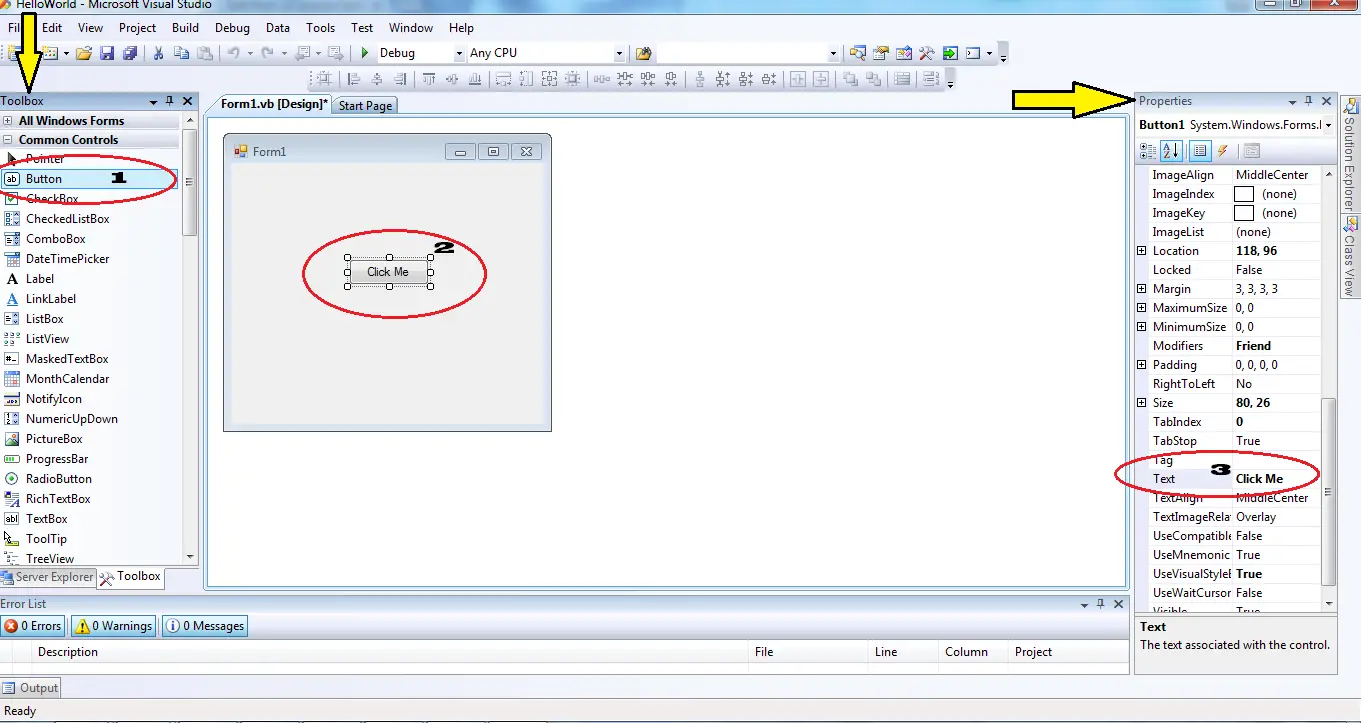

VB NET ERRORPROVIDER EXAMPLE CODE
Add the following code inside the class block.īool IExtenderProvider.CanExtend(object target)įunction CanExtend(ByVal target As Object) As Boolean _ĭim t As TextBox = CType(target, TextBox) Whenever you implement the IExtenderProvider interface, you need to override the CanExtend property. MaxValue: This is the maximum value for the range.

MinValue: This is the minimum value for the range. RangeValueRequired: This tells the control to accept numbers in the supplied range. Required: This tells that control to accept only numbers. I am telling any control that looks in here (using reflection) that I am providing four properties: Public class NumberValidate : Component, IExtenderProvider (At least read up a little so you know what attributes are.) Here is the class definition. I suggest you read up on attributes before you go any further. I also use some for the properties within. I use some specialized attributes for these classes. Reading the first part of this chapter makes this part so much more understandable. The first part of this chapter covers regular expressions. The next thing to add is some namespace references to your code.Īs you can see, you will be using regular expressions again. You will notice that my solution has two projects.

I start the next section by introducing you to my buddy Vlad the validator.įigure 8-13: A reference to the form's DLL This allows you to have 50 TextBoxes on the screen and use the extensions on only a few of them. The second class provides a regular expression property for validation before focus leaves the control.īy the way, both of these classes allow the TextBox to work as normal by using a Required property. The first class provides properties that make the control accept only numbers or only numbers within a certain range. This next example contains two classes that extend a TextBox control. It also allows you to turn any control on your form into … SuperControl! The code works the same (within limits) for any control. The ToolTip control does the same thing.Įxtending the properties of a control offers you a big advantage over making your own control. It is set up to extend the properties of any control on the current form. The ErrorProvider is a class that inherits from Component and also implements the IExtenderProvider interface. Your several controls now have a few extra properties related to the ErrorProvider. Try a new project with several controls on it and look at the Properties page. In case you have not been paying attention, as soon as you put the ErrorProvider control on the form, every visible control on the form has several new properties that are related to the ErrorProvider control. Want a for-instance? How about the ToolTip control? I have not discussed this control in any detail, so how about the ErrorProvider control?Īs you know from previous chapters, the ErrorProvider control is something that you plop down on your form and it appears in the tray below the form. The neat thing about this extension is that it can work with any control you like. The other thing you can do is add a few new properties to a control without making a new one altogether. This is what you did in the last example. One of them is to make a completely new control by building on an existing control. You can do two things about making your own validation controls in.


 0 kommentar(er)
0 kommentar(er)
